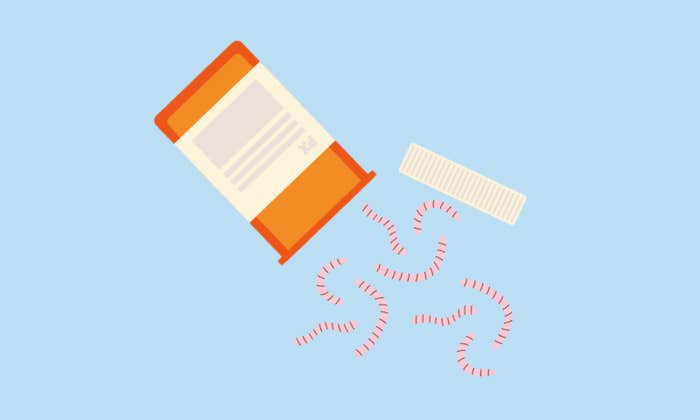In 2011, Hanli Prinsloo decided she wanted to break the woman’s world record in free diving. She would need to dive to 213 feet below the surface of the Mediterranean Sea and hold her breath for about four minutes. Until the 1960s, scientists believed it was not humanly possible. The increased water pressure at that depth, they argued, would crush her lungs.
The then-33-year-old, South African, former acting student knew the feat would require rigorous training and commitment. But Prinsloo felt at home in the water. She’d grown up on a dusty, 200-hectare horse farm outside Pretoria, chasing her sister from dam to stream to swimming pool and back and dreaming of becoming a mermaid. So in the spring of 2011, Prinsloo packed a bag and traveled to an ashram in the foothills of the Indian Himalayas. She spent a month meditating and practicing Vinyasa Yoga.
After six weeks, it was off to Dahab, Egypt, an isolated Bedouin Village hemmed in on one side by the Red Sea, and the Sinai Mountains on the others. On dive days, Prinsloo and fellow diver Yaniv Keinan hopped in a 4×4 and bounced past tourists on camels down a rutted desert track until they reached the water. They waded 50 feet through knee-high water out to the edge of a sinkhole, about 400 feet deep, known as the “Blue Hole.”
As Prinsloo floated on her back above the hole and prepared to dive, the mood was every bit as solemn as at that Ashram back in India. Quiet and still, Prinsloo focused on the oxygen moving in and out of her lungs, becoming aware of her heartbeat, trying not to think. When she moved, she did so in exaggerated slow motion, as if in a trance.
At a depth of 200 feet, she opened her eyes in the translucent water. “It was like a blue glow,” she said. “The way light would look to a moth.”
Prinsloo’s slow, deep breaths ensured the maximum oxygenation of her blood, and the opening up of any constriction in the airways of her lungs. She needed her lungs loose and relaxed, able to expand to store the maximum amount of oxygen when she dived. After five minutes, Prinsloo reached a deeply meditative state. “As you drop down, the perfect dive is where you don’t have a single thought,” she said.
Prinsloo dove with her eyes closed, alternatively focusing on kicking and equalizing the pressure between her ears by pinching her nose and blowing. As she descended, her body underwent an amazing transformation. Her heart rate and metabolism slowed dramatically. The arteries in her limbs constricted, pushing oxygen-rich blood back to her body’s vital organs. The walls of her lungs shrunk in volume, while at the same time filling with extra blood and hardening to counteract the increasing pressure at depth.
About 60 feet down, Prinsloo reached “negative buoyancy.” Her now dense body gave gravity the upper hand over buoyancy. She surrendered and let gravity pull her down, falling as the water pressure closed in on her with a soft embrace. It was almost as if Prinsloo had found a way to achieve her childhood dream. She had transformed, if not exactly into a mermaid, than into a centered, aquamarine version of herself. At a depth of about 200 feet, she opened her eyes in the translucent water. “It was like a blue glow,” she said. “The way light would look to a moth.”
What free divers are capable of “is amazing,” said Peter Lindholm, a group leader for baromedicine and human physiology in extreme environments at Sweden’s Karolinska Institute. “But there’s nothing magical about it. You can explain it if you know physiology.”
In recent years, the feats of free divers have forced Lindholm and other scientists who study physiology to explain not only what humans are capable of underwater, but how much control we have over the speed of normal metabolic functions. Many of these feats, including some of the adventures that lay ahead for Prinsloo during her 2011 record attempt, were detailed in the 2014 book, Deep, by James Nestor, who spent several years traveling to far-flung regions of the globe to learn about the sport and understand why anyone would want to do it.1 Free divers, scientists say, may push evolutionary buttons honed in a simpler epoch. A time, perhaps, before obstetricians, when it was paramount to slow down to survive a perilous passage through a birth canal that restricted blood flow. It was a time when natural selection, for whatever reason, favored traits that allowed us to downshift our biological systems into a slow gear we are only beginning to rediscover. It can be a dangerous process, physiologists say, but available to us all.
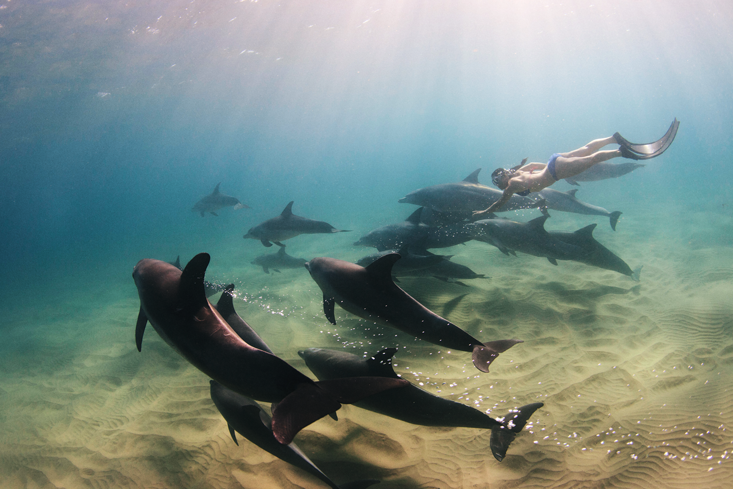
Prinsloo was waiting for me on the shore of Crystal River in Florida, a lush nature reserve on the Gulf of Mexico. She now runs a nonprofit conservation group, I Am Water, and was gathering documentary footage on manatees, which congregate in the area’s naturally warm springs during the cold winter months. She had suggested I join her and insisted she could teach me to hold my breath like a free diver in one lesson.
As the sun ascended, we hopped in sea kayaks, paddled down the river for half a mile, tied them up the shore, and splashed into the water. I duck-dived beneath the surface and followed Prinsloo to a 10-foot-long manatee with its paddle-like flippers, elephantine skin, and cow-like snout. It regarded us passively through small button eyes as we all floated several feet beneath the surface together in silence, slowly bobbing in silence with rhythm of the gentle, morning tide. As I surfaced, panting for air, I watched Prinsloo stay underwater with perfect calm. Clearly I had a lot to learn.
Prinsloo and I paddled back to shore and found a quiet spot on a grassy knoll. Kneeling in front of me, she told me to lie down and close my eyes. “Breath deep, slow down, realize that we tell ourselves stories, and tell yourself a good one,” she said. She then led me through three breath-holds, promising that by the third one I would be amazed by how long I could hold my breath.
The first breath was the “feel-good breath-hold.” She asked me to relax, hold my breath in a state of near sleep, and wait until I felt a “trigger” that snapped me back to something approaching awareness and signaled the nonverbal version of, “What the hell? This is too long. You need to breathe!”
For the second breath-hold, Prinsloo instructed me to go beyond this “trigger point” and continue to hold my breath until my diaphragm started to contract. Finally we reached the third hold. For this one, Prinsloo instructed me to observe the trigger, but keep holding, to feel the contraction, and press on.
“Let the contractions come and go,” she advised me. “They don’t go away, they don’t get any better, they just are, so you just try to keep relaxing and let whatever happens happen. Just let them move. It’s almost like a wave when they start coming.”
I placed my hand on my stomach, and continued to hold my breath. It wasn’t so bad. In fact, I felt a stillness, time seemed to stop. For a few moments, I was profoundly aware of the world around me. The splashing from a distant pool, the sound of people chattering as they walked nearby, the sun on my face. Then I could hold my breath no longer.
After I exhaled, Prinsloo revealed my times and they shocked me. My first breath hold lasted for 1 minute 45 seconds. My second was for 2 minutes and 50 seconds. On my third attempt, I held my breath for almost 3 minutes and 45 seconds. I had more than doubled my time by following Prinsloo’s simple instructions.
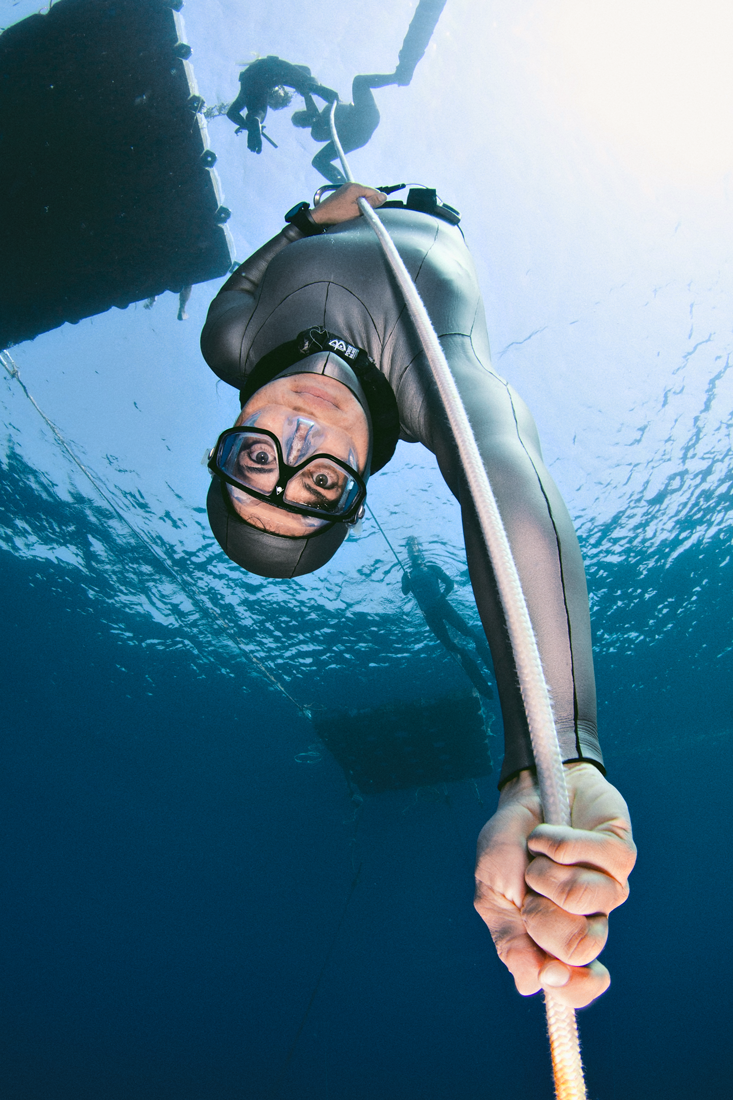
For many decades scientists were certain that what free divers routinely do today was not just dangerous but suicidal. They based this belief on the widely accepted work of the 17th-century, Irish-born naturalist Robert Boyle, one of the fathers of modern chemistry. “Boyle’s law” predicted that at around 100 feet beneath the surface of the ocean, the pressure caused by the water would grow so great that it would cause a divers lung’s to rip and rupture. The calculation was based on Boyle’s discovery that the product of gaseous volume plus the pressure pushing on it remains constant (if the temperature and amount of a gas remains unchanged).2
In practical terms that means that when water pressure increases on the outside of the lungs, as it does when we descend into the ocean, the volume of the lungs and the oxygen inside them must decrease by a corresponding amount, by packing together into a tighter configuration. Eventually it was thought the pressure would grow so great that the lungs and the oxygen in them would contract to their limit. Boyle’s law predicted that limit would arrive at around 100 feet below the surface, at which point any additional pressure would cause a diver’s lungs to rupture.
You can credit a pair of macho daredevils almost 65 years ago with starting the process that punctured this myth. Back in 1949, a Hungarian-born Italian fighter pilot named Raimondo Bucher, with a background in spear fishing, boasted that he could dive to a depth of 100 feet with a single breath hold. Ennio Falco, another Italian diver, challenged Bucher to prove it.
Falco donned scuba gear, swam to the bottom of the sea off the island of Capri, and waited skeptically with a piece of parchment in a cylinder at the bottom. Soon enough, the Hungarian daredevil arrived underwater to claim it, sans scuba gear, and Bucher was forced to hand it over—along with the 50,000 lira ($800) the two had wagered. The sport of modern free diving was born. An American diver reached 230 feet a few years later. And in 1976 the unthinkable happened when Frenchman Jacques Mayol, who introduced yoga and meditation into the sport, became the first man to break the 330-foot dive mark.
“It certainly shocked the scientific community,” said Claes Lundgren, one of the world’s leading experts on respiratory and hyperbaric medicine, and the former director of the University of Buffalo’s Center for Research and Education in Special Environments. “It was remarkable that they could go that deep.” At 330 feet down, the water pressure is roughly 11 atmospheres, Lundgren explains. In other words, the pressure pushing in on the lungs was increased to 11 times normal.
Nor was the repudiation of Boyle’s law the only piece of dogma overturned by this brash new breed of sportsmen. When scientists began to calculate the amount of oxygen in the lungs of these free divers, and compare it to the amount that it was believed a diver would need to survive under water for any length of time, the numbers didn’t add up. Somehow, those participating in the new sport were surviving underwater with far less air for far longer than anyone had thought possible. All of which led scientists like Lundgren to ask the obvious question. What on Earth could be going on?
Human beings, it turns out, have been gifted with a series of underwater survival mechanisms so powerful that some scientists now argue they were almost certainly forged on the crucible of natural selection.
One of the first of these adaptations was discovered in 1962, when Lundgren’s fellow Swede Per Scholander, then a physiologist at San Diego’s Scripps Institution of Oceanography, strapped heart-rate monitors on human volunteers and demonstrated something remarkable: The simple act of submerging them in large water tanks caused their heart rate to slow dramatically. Scholander went a step further. He had his subjects dive underwater, hook up to machines and do exercises that on land would invariably cause their hearts rates to spike. Again their heart rates decreased.
Scholander had a clue what was going on. He had seen it in aquatic animals —porpoises, ducks, seals, penguins, and beavers—he had studied. He called it the “dive reflex.” When submerged, the animals went into a state, similar to hibernation, aimed at preserving oxygen. Their heart rates slowed down dramatically. The peripheral arteries of the body closed up, forcing the oxygenated blood back toward the heart, the brain, and the other vital organs of the body, allowing the body to maintain them for far longer.
Scholander was able to document this phenomenon in humans, called “vasoconstriction,” by demonstrating that it was impossible to draw blood from the peripheral arteries of his human subjects—the arteries were closed up—and by measuring the lactate that built up in the muscles during submersion. Lactate is a byproduct of glycolysis, and appears when oxygen to the body is limited and we are forced to generate energy anaerobically, breaking down carbohydrates in the absence of oxygen. (Some free divers emerge from deep dives with limbs that appear almost blue).
Lundgren, among others, demonstrated how these phenomena might counteract Boyle’s law. He recruited volunteer firemen from a fire brigade in the Swedish city of Malmo, submerged them up to the neck in water, and used a heart catheter to measure the increase in blood circulation in the chest. Lundgren discovered the body was able to counteract the increased outside water pressure by reinforcing vessels in the walls of the lungs with more blood, in much the same way we increase tire pressure by adding more volume of air to the inside of a tire.
The popularity of free diving has exploded. It’s the sport’s emphasis on learning to slow down that makes it so attractive.
Boyle’s law had not been overturned. Scientists simply hadn’t taken into account the effect this counterforce could exert to allow survival underwater. “A lot of blood, much more than was usually thought, can be transferred from the blood circulation out in the tissues into the blood vessels of the lung,” Lundgren said, placing that amount at about half a gallon. The extra, densely packed blood can act as a bulwark, exerting a counterforce against the increased pressure pushing inward by the water.
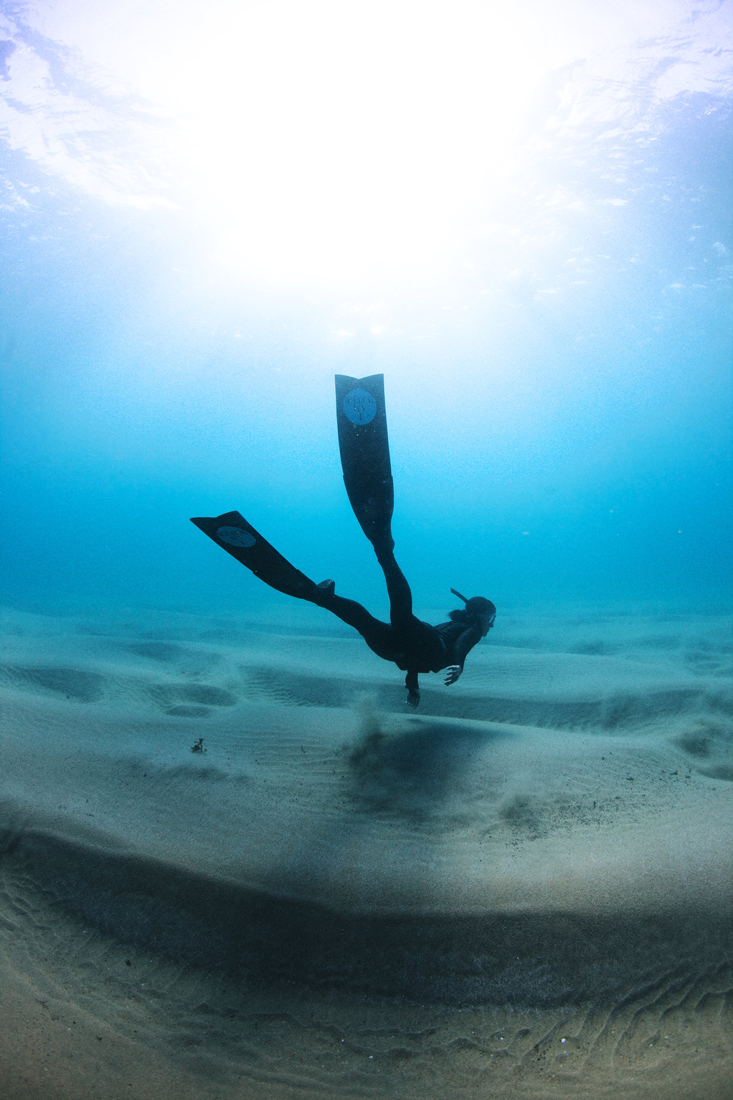
Actions of the spleen are also important to free divers. In addition to synthesizing antibodies and removing old red blood cells, the spleen also holds a reserve of blood. In recent years, Erika Schagatay, a physiologist at Mid Sweden University, who has conducted tests on many of the world’s leading free divers, including Prinsloo, has discovered a new phenomenon. When this reserve is released into circulation—as it most certainly is after free divers take their first practice dive—it can take in, hold, and deliver enough extra oxygen to various parts of the body to increase a breath-hold time by as long as 30 seconds. This reserve appears to be part of an evolutionary safety mechanism, built into the autonomic nervous system, available to the body to combat hypoxia. Deep-sea mammals generally have larger spleens and rely on them during deep dives.
Lundgren noted that the automatic dive response is often seen in human babies, who have been known to survive for miraculous periods of time after falling in water. This suggests a natural survival mechanism. “We are born with it,” Lundgren said. “But I don’t think nature, so to speak, had anticipated these kids would become divers. What nature knows is a child, during the passage through the birth canal, has restricted blood flow because the umbilical cord is squeezed. It’s a serious threat to a child’s oxygen supply, and it’s most likely a very important adaptation.”
Becoming a free diver is about harnessing inborn physiological gifts and pushing beyond them. The length of time one can safely stay under water without breathing, Schagatay explained, is determined by how much oxygen one has stored in the body. The far limit is determined by when the oxygen levels fall so low one’s brain shuts down. The distance between these two is determined by your metabolic rate. “When you can down-regulate some functions, the oxygen lasts longer between these two lines,” she said. The less you move, the more you can slow your breathing down, and the less one thinks, the less oxygen you use, she noted.
But one can also increase dive times by finding ways to store more air. Around 2000, a group of Canadian free divers approached Ralph Potkin, a pulmonologist at Cedars-Sinai Medical Center in Los Angeles. They claimed that they could expand their lung capacity far beyond normal limits and they wanted his help to prove it. The divers were using deep-breathing exercises and a technique called “glossopharyngeal insufflation.” The technique had only been explored in the context of restoring lost lung function to previous levels (never in the context of surpassing them). Pulmonologists sometimes used the techniques with quadriplegics suffering from spinal cord injuries.
The technique, also known as “lung packing” or buccal pumping, involves a series of manipulations and maneuvers to force air through the trachea and into the lungs. (Buccal refers to mouth or cheek). Potkin was astounded to discover that free divers could increase their lung size by a full liter, or over 30 percent of what he had taken to be their maximum lung volume. “I was shocked initially,” said Potkin, who later went on to serve as chairman of the medical committee on the medical physiology of free diving for the sport’s leading body, the Association Internationale pour le Développement de l’Apnée.
The divers, it turns out, were filling their lungs to what seemed to be their capacity, and then using the muscles in the back of the mouth and throat that we normally rely on to swallow food, (forcing it down into the digestive track) to instead force even more air down into the lungs. The lungs are, of course, flexible. And the extra air simply pushed them outward further, beyond the limits to which they would normally (and presumably safely) expand. One 2006 study found that a six-week yoga regime could expand lung capacity by nearly 40 percent, likely through increased respiratory muscle strength which made it easier to push out the chest walls. The average adult lung capacity is 6 liters of air. Stephane Mifsud, who set the world breath-hold record in 2009, has a 10.5-liter lung capacity. Prinsloo can hold 6 liters in her lungs, compared to 4.2 by the average female.
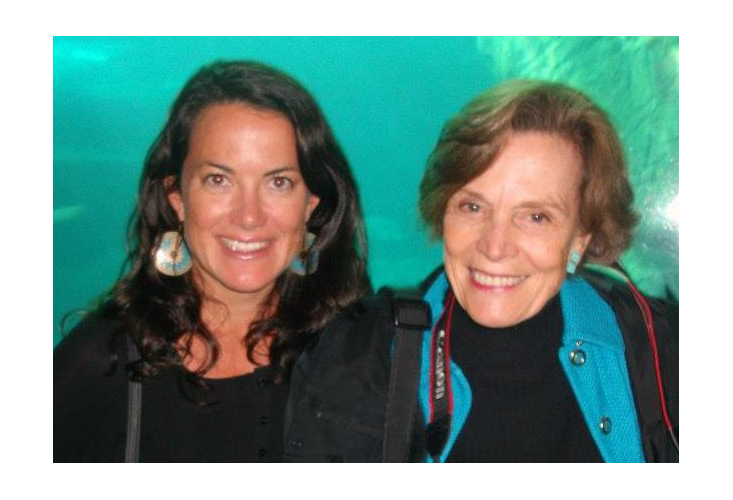
Nature, however, is not always so amenable. There are downsides to forcing extra air into the lungs. Some divers, Potkin noted, cough up blood and can develop hemorrhagic or pulmonary edema (inhalation of fluid into the lungs) that can be fatal. In November 2013, Nicholas Mevoli, a 32-year-old Brooklyn diver, surfaced after a 236-foot dive, flashed the OK signal, then, 30 seconds later, lost consciousness and died. An autopsy revealed he had drowned, implying water had somehow seeped into the areas of the lung normally reserved for oxygen.
Prinsloo herself experienced the dark side at the Blue Hole, in Dahab, Egypt, during her preparation for the 2011 world championships. One morning, as she began to drop, she felt her diaphragm contract. She finished the dive, but when she surfaced, she spit flecks of blood into her hand and her throat felt scratchy, as if she had swallowed a fish bone. She had squeezed her larynx and damaged its capillaries.
At the world championships a month later, Prinsloo discovered on her first dive that she couldn’t prevent the air in her mouth, which she held in reserve, from getting sucked into her lungs. She could not finish the dive and withdrew. She has little doubt she made a mistake back in Egypt.
“I shouldn’t have continued the dive,” she said of the dive that squeezed her larynx. “My mind was already at the bottom. I was pushing. I lost sight of what I was doing. And that just doesn’t work in free diving. Only when you stop trying, that’s when you actually start achieving it.”
Her experience at the world championships and a series of experiences outside of it caused her to reevaluate what she was doing. She had lost touch with the serene essence of the sport. She never dove competitively again.
Today, said physiologist Schagatay, who free dives in her spare time, the popularity of free diving has exploded. She attributed the boom not to a blind hunger for ocean glory or desire to use techniques like lung packing. Rather it’s the sport’s emphasis on learning to slow down that makes it so attractive. “Because everyday life is hectic, and we have all these stress-induced functions in the body, this is one way to learn how to control them,” she said.
Ultimately, said both the scientists and sportspersons, we can push the human mind and body past limits once thought impossible. But nature will only allow us to go so far. We have to find the sweet spot, somewhere between a healthy respect for nature’s power and a willingness to let go of our fears, slow down and, when the time is right, breathe.
“You can’t force yourself into these subtle states,” Prinsloo said. “You can’t think, you can’t push. It’s about being still. It’s about letting go.”
Adam Piore is a freelance writer based in New York. @adampiore
























